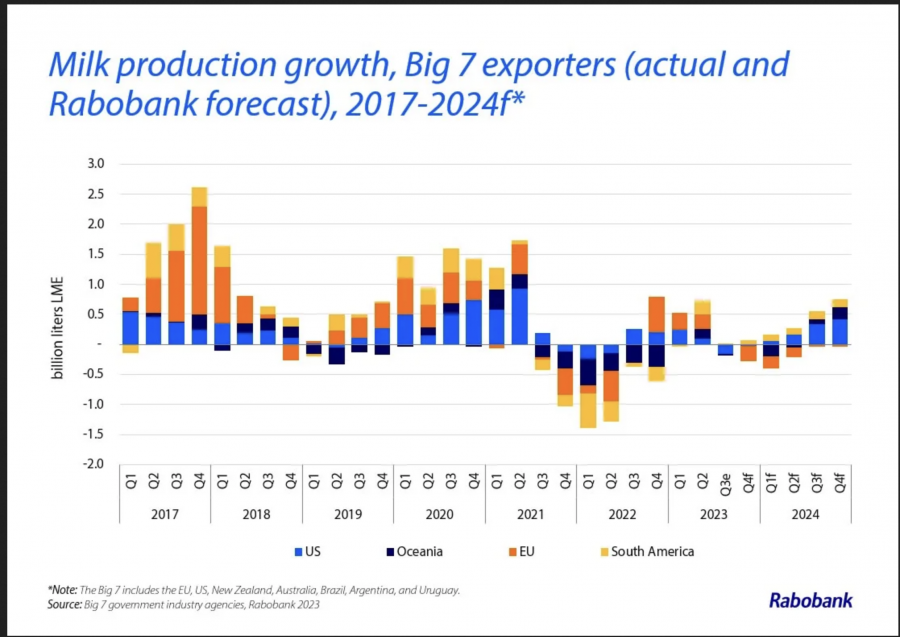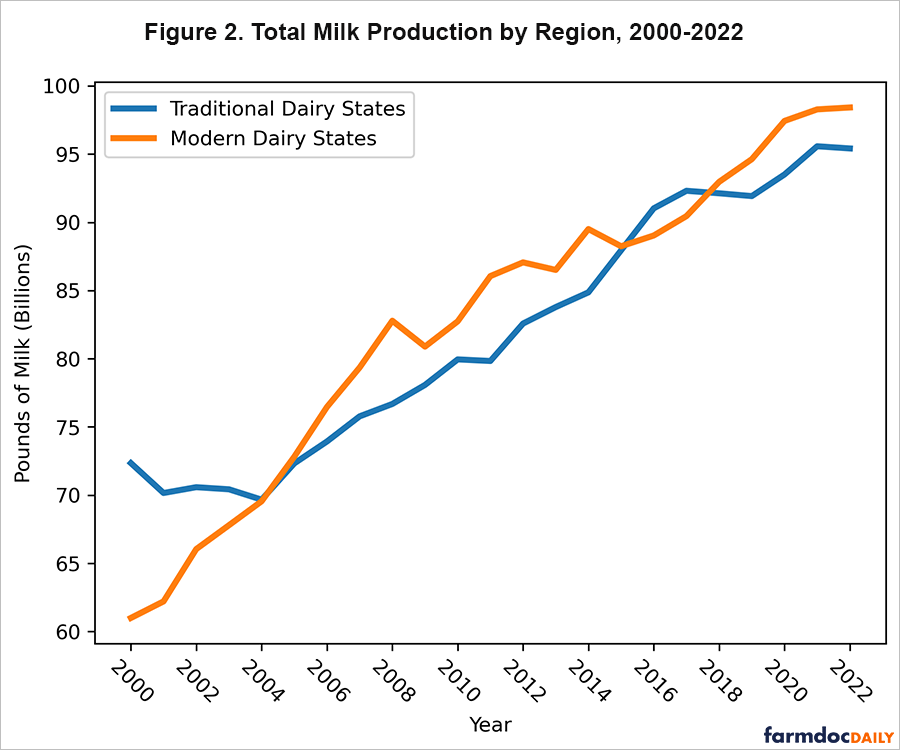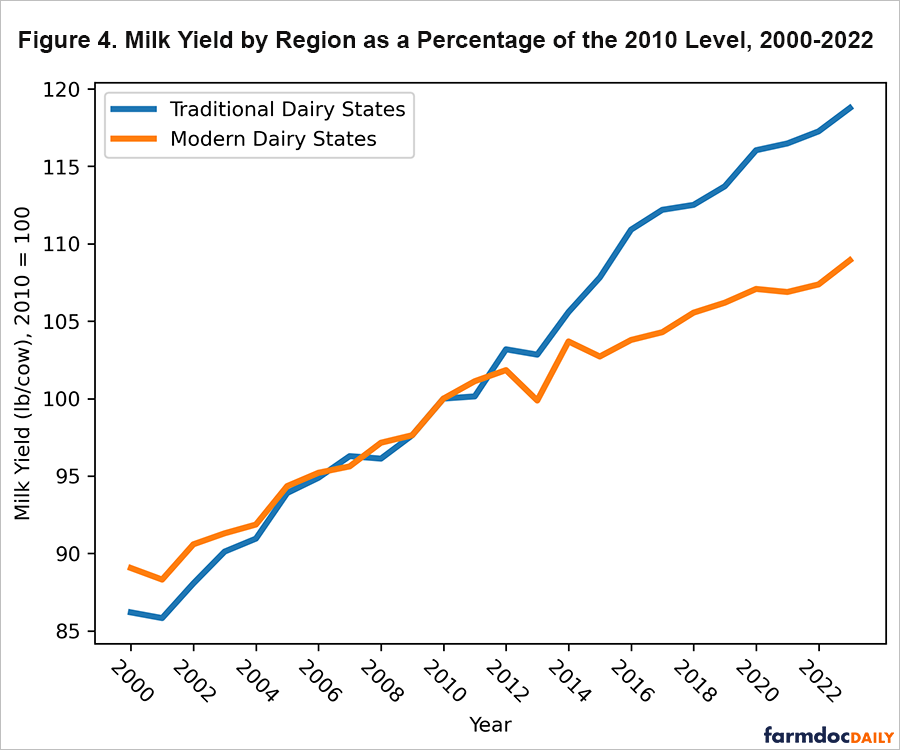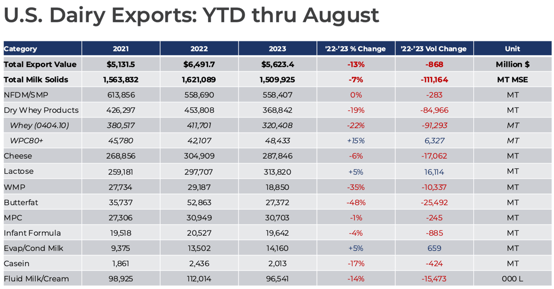Despite our cows having the third lowest average yield of the 27 EU member nations, milk production in Ireland is more lucrative than in many other EU member states.
Only in Ireland, due to reduced production costs, were milk producers able to earn what the European Milk Board (EMB) considered a fair wage of €22.23 per hour for the five years from 2015 to 2019.
According to the EMB, of which ICMSA is the sole Irish member, the milk price given to farmers in most countries, or on average in the EU, does not even cover their production expenses.
The EU Farm Accountancy Data Network numbers were used in the research of milk production costs in eight EU nations. It assessed not just the cost of agricultural supplies and regular running expenditures, but also how distant the farmers and family members working on the farms were from a “decent income.”
From 2015 to 2019, it was discovered that the milk price did not even cover the paid expenses of production (which included minimum wages or adequate payment on the basis of a common wage agreement) in most countries, and therefore a “decent income” was far out of reach.
Dairy producers in Denmark and the Netherlands were discovered to make no money from milk production on average. Even with CAP funding, paid expenses in Denmark and the Netherlands could not be covered. In these nations, the typical dairy farm ran a deficit.
The hourly wage on a French farm was found to be €1.24 whereas it was €1.82 in Luxembourg.
In Germany and Lithuania, the hourly wage was €2.63 and €2.34, respectively.
After subtracting their paid expenses, Belgian milk producers were left with an hourly pay of €6.58.
On average, the revenue from milk prices and CAP payments enabled EU farmers to earn €3.25 per hour.
As a consequence, the number of dairy farm closures in the EU is growing.
“From a purely economic standpoint, it makes little sense for a young farmer to go into milk production,” according to the EMB and the Farm Economics and Rural Studies Office (BAL) in Germany, which conducted the technical income study.
In summary, they discovered that Irish farmers had a 3% cost leeway (calculated at 30.17c per litre), but farmers fell short by 30% in Belgium (production cost 44.01c per litre), 17% in Denmark (production cost 40.02c per litre), 30% in France (production cost 47.34c per litre), 25% in Germany (production cost 43.96c per litre), 38% in Lithuania (production cost 45.41c per litre), 26% in Luxembourg (production
According to the EMB, even in 2022, when milk prices were raised to compensate EU farmers’ skyrocketing expenses for energy, fertilizers, and feed, prices did not climb beyond cost levels for many farmers throughout the 27 member states.
In contrast, 2022 was a record-breaking year for Irish dairy producers.
According to the EMB, the EU is losing milk farmers at an alarming pace, owing to chronic, rock-bottom producer prices that barely cover production costs. Furthermore, continuous crises and uncertainty drive farmers out of the company and keep the next generation out.
Long-term milk production is dropping in important producing nations such as France, Germany, and the Netherlands.
If additional evidence is required, the EMB research provides it. Ireland’s low-cost milk production method is the way to proceed. But will it last? improved cow numbers, improved milk output per cow, increased fat and protein percentages, greater grass growth, increased stocking rate, and extra acreage entering the dairy sector all contributed to success.
Can it go on with new difficulties like competitiveness, greenhouse gas emissions, water quality, biodiversity, labor, food security, and dairy-beef?
Even in the face of high cost increases in 2022, Ireland’s concentration on grazed grass in the diet has been the fundamental reason driving our competitiveness. It is supplemented with a focus on the Economic Breeding Index (EBI) in order to choose a dairy cow with adequate characteristics for the low-cost grass system. However, the cost growth since 2022 means farmers must double down on cost management and depend on commercial feed, fertilizer, and energy even less.
According to Teagasc, the most significant difficulty for dairy producers right now is a lack of available personnel. If dairy revenues decline, the task may become more difficult.
The reliance on live calves export also offers a concern.
However, climate change and the push for more sustainability have the potential to disrupt Ireland’s successful dairy farming paradigm.
Already, the new maximum stocking rate of 220 kg of organic nitrogen per hectare for many derogation farmers may force them to shift away from Ireland’s low-cost pasture-based system and toward the continental model of forage maize and high concentrate feeding (the higher-cost systems that have left so many producers in other member countries struggling to make ends meet). Where the stocking rate is limited, it may boost productivity per cow, but shifting to high-cost production eliminates a safety net that has served farmers here well.
It may also contradict the agricultural sector’s obligation to cut emissions by 25% by 2030. According to Teagasc, there is widespread evidence that high-input systems are more environmentally damaging than pasture-based systems, where more grass and less bought feed, fertilizer, and energy match better with decreasing emissions.
Teagasc’s recent calculation shows that the 16% reduction in fertiliser use has reduced greenhouse gas emissions from dairy, cattle, sheep, and tillage farms, continuing the trend of a 1.4% reduction in agricultural emissions last year, according to the Environmental Protection Agency.
However, fertilizer reductions were implemented too late to restore water quality and avoid stocking rate cutbacks for nitrates derogation producers.
Perhaps there is a medium ground, and it might be the higher output yet grass-based spring milk production practiced at the Lyons Estate at University College Dublin.
Professors Finbar Mulligan and Karina Pierce of UCD presented the findings of their Lyons Estate study at a recent Irish Grain and Feed Association conference.
The study sought to address three questions. Is it feasible to produce the quantity of milk or dairy product we need on a national scale with fewer cows? Is it feasible to keep the same number of dairy farm companies running while using fewer cows and lower stocking rates per farm?
Will adopting the Lyons high-output grass-based strategy by certain farms aid industry sustainability?
Can UCD’s high-output grazing herd answer environmental concerns about growing cattle numbers, emissions, nitrates, and the land, construction, and labor constraints encountered by Irish dairy producers by producing Ireland’s 8,820 million litres of milk from less than our 1.65 million cows?
Lyons’ 58-cow dairy herd is stocked at 2.3 livestock units per hectare. Its seven-year average output of 7,327kg compared to an EU Commission average yield of 6,006kg for Ireland in 2021. At Lyons, milk solids for a 305-day lactation average 597kg.
In 2022, the average EBI was 216, putting it in the top 1% nationwide.
The Lyons “cornerstone” is grazed grass, therefore it is measured in every paddock every Monday morning, there is yearly soil analysis, 10% of the milking platform is reseeding annually, and white clover is also used in grassland management (it averaged 15.5% of swards in 2021, 13.6% in 2022). Since 2016, grass grown per hectare has been in the 11,700 to 14,000kg dry matter range, making it one of the best performers nationwide.
Nitrogen per acre ranged from 159kg in 2022 (12,100kg of grass cultivated) to 237kg in 2017.
How does the farm stack up against a highly effective low-concentrate-feeding system with 2.7 livestock units per ha, 5,750kg of milk, 465kg of milk solids, 500kg (dry matter) of concentrates, and 90% of the diet derived from grazed grass and silage? The significant difference at Lyons is the 1,300kg (dry matter) of concentrates per cow, with grazed grass and silage accounting for just 78% of the diet.
According to UCD’s 2033 financial simulation, the economic profit after labor, rent, and interest is €906 per cow, vs €759 for the low-concentrate-feeding scheme. Lyons is also ahead per hectare (€2,113 vs €2,046). The simulation takes into account all labor as well as the potential cost of land and capital.
Because of the new derogation limit stocking rate of 220 kg, both systems must cut stocking rate by about 12%.
However, if this must be handled without the acquisition of additional land, the effect on profit per ha is predicted to be larger for the lower cost approach (€455 against €409).
In terms of environmental sustainability, the nitrogen usage efficiency of both systems is comparable. However, the Lyons method has a 20-cow advantage per 50-hectare plot.
What is the long-term viability of Lyons’ 1,300kg (dry matter) concentrates per cow, depending on imported ingredients? According to the Lyons researchers, this does not have to be an issue since their testing show that Irish feed components can perform just as well. The major components in their testing were rolled oats, barley, and beans, which resulted in a 12% protein concentrate that the researchers claim may maintain milk production levels for their high-output grazing cows. The local components have a lesser carbon impact, which is important for sustainability.
Which path will the ordinary Irish dairy farm take? Attempt to equal Denmark’s yields of over 10,000kg (we could cull 40% of our cows without losing output)? Or Lyons’ 7,327kg, which is close to the EU average (we could cut 16%). Or should we keep as close to our present low-cost yields of about 6,000kg as possible?














%20(593%20x%20281%20px).png?width=554&height=263&name=Chart%2010%20(605%20x%20340%20px)%20(593%20x%20281%20px).png)




